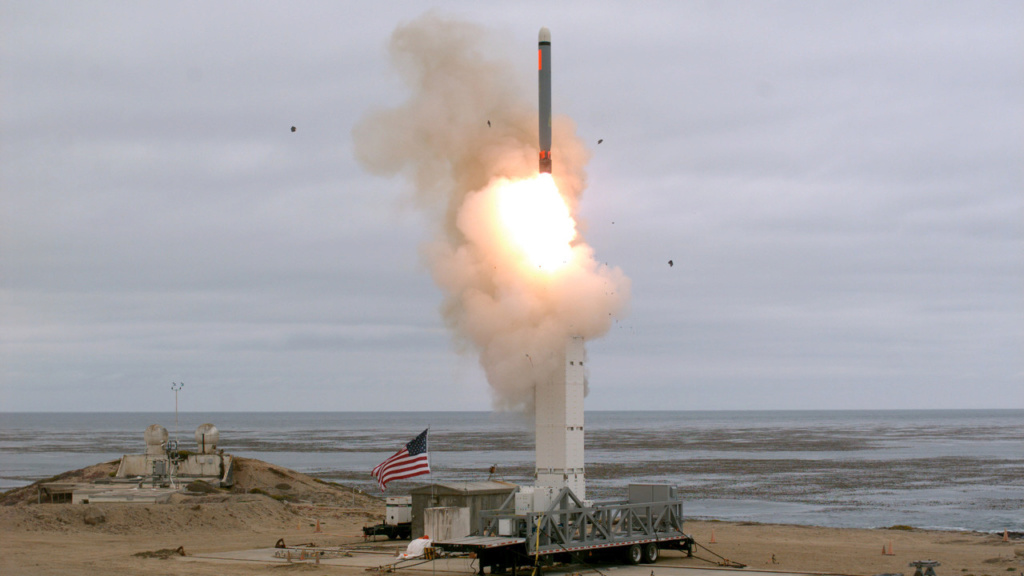During the flight of strategic B-1B bombers to Europe, the use of LRASM missiles was tested
As reported by the US Air Forces in Europe and Air Forces Africa on June 1, 2020, during a long-range flight that resonated on May 29 with two Rockwell B-1B Lancer strategic bombers from the 28th Air Force bomber wing USA from the Ellsworth air base (South Dakota) from the continental USA to Europe, with the passage of the airspace of Poland and Ukraine, and then the Black Sea, these aircraft worked out the combat use of the new Lockheed Martin AGM-158C LRASM long-range long-range aircraft anti-ship missiles (Long-Range Anti-Ship Missile).
Two B-1B bombers from the 28th bomber wing from Ellsworth Air Base (South Dakota) conducted a strategic mission for long-range bombers in the Black Sea region on May 29, 2020.
During the mission, two B-1s trained to use the Long-Range Anti-Ship Missile (LRASM) long-range anti-ship missile. Designed to defeat enemy ships, LRASM gives the B-1 advanced capabilities to combat ships.
LRASM - a new generation of weapons designed to detect and destroy targets in groups of surface warships in electronic warfare.
“LRASM plays a critical role in ensuring US Navy access for operations both in the open ocean and in the coastal zone, thanks to its enhanced ability to recognize targets at long range,” said Lt. Col. Timothy Albrecht of the 603th Air Operations Operations Center bombers. "With the increase in the number of sea threats and the improvement of their armaments to prevent entry into access areas, this inconspicuous cruise missile reduces the risk of carrier damage, overcoming the enemy’s sophisticated air defense systems."
Albrecht also emphasized the fact that with the help of training scenarios for long-range bombers, B-1 flight crews can be trained in new emerging threats. Preparing for these threats adequately prepares them to be prepared to achieve the goals of the National Defense Strategy.
“The increase in the number of closest competitors and the intensification of tension between NATO and our opponents have returned the potential of anti-ship actions to the forefront of anti-surface ship tasks for bomber crews,” Albrecht said.
In addition to improving bomber crew training, the ability of the U.S. Air Force to conduct combat training with this weapon system also increases our deterrence capabilities.
According to Albrecht, such exercises increase the deterrent potential not only of the United States, but also for our allies and partners. He says that in the future, opponents will have to worry not only about missile threats from surface ships, but also from ground-based bombers. These opportunities should greatly influence the plans of potential adversaries, and they should take them into account in their decisions. Bombers equipped with LRASM should allow the enemy to think better and restrain the aggressive actions of potential opponents who seek to harm the United States, its allies and partners.
In 2018, the U.S. Air Force Strategic Command approved Ellsworth as the first deployment site for warheads equipped with AGMR-158C LRASM missiles. This decision made Ellsworth and the B-1 bombers the first base and the first type of aircraft to prepare for the use of LRASM missiles.
On the bmpd side, we recall that the LRASM anti-ship missile was created by Lockheed Martin together with DARPA and the Navy and the US Air Force as part of the Offensive Anti-surface Warfare (OASuW) Increment 1 program and is an anti-ship version of the Lockheed Martin high-precision operational-tactical cruise missile AGM-158B JASSM-ER (Joint Air-to-Surface Stand-off Missile Extended Range). The LRASM range in the aviation version is not officially disclosed, but is claimed to be within the “range of 500 nautical miles” (908 km).
The subsonic low-visibility missile LRASM has a starting mass of about 1100 kg and carries a 1000-pound (454 kg) semi-armor-piercing warhead. The combined missile guidance system developed by BAE Systems includes inertial-satellite correction on the marching section and a combination of infrared (type IIR) and passive radar homing systems on the final section. Active radar homing is ruled out to increase rocket stealth.
The first in December 2018, the AGM-158C LRASM missiles were deemed to have reached the “initial operational readiness” stage (Еarly Operational Capability - EOC) as part of the armament of the US Air Force B-1B strategic bombers, which became the first carriers of these missiles. One B-1B bomber is capable of carrying up to 24 AGM-158C LRASM missiles in the internal arms bays.
In November 2019, the U.S. Navy considered LRASM missiles as part of the armament of Boeing F/A-18E/F Super Hornet deck fighters to reach the EOC stage (one F/A-18E/F aircraft can carry up to four AGM-158C LRASM missiles).
Subsequently, the US Air Force plans to introduce LRASM missiles into the armament of the strategic Boeing B-52H bombers, and the US Navy into the armament of the Boeing P-8A Poseidon base patrol aircraft.

https://bmpd.livejournal.com/4046538.html











